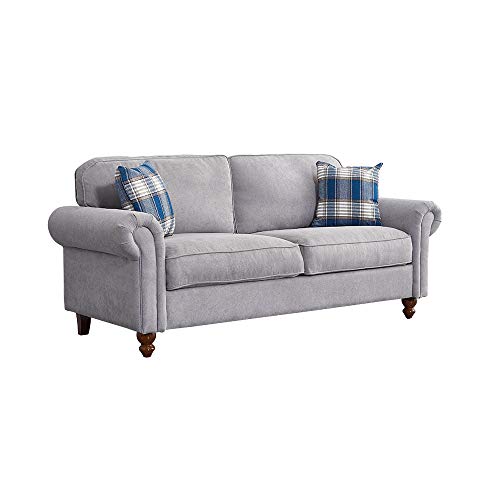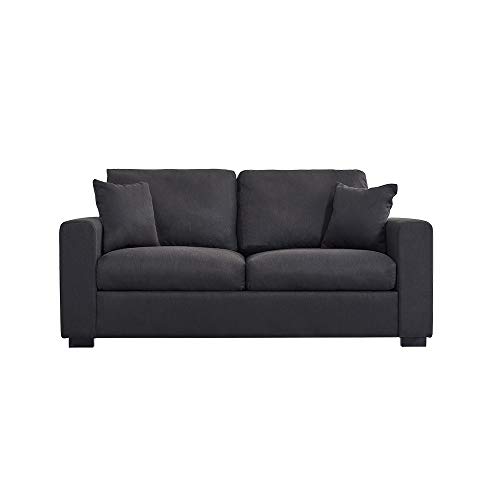Guide To 2 Seater Leather And Fabric Sofa: The Intermediate Guide The …
페이지 정보
작성자 Charlie MacRory 작성일24-11-21 21:26 조회2회 댓글0건관련링크
본문
 Choosing Between a 2 Seater Leather and Fabric Sofa
Choosing Between a 2 Seater Leather and Fabric SofaIf you're looking for a new sofa, it isn't easy to decide between leather or fabric. This is especially the case if you aren't a professional in furniture.
If you have kids or live in a small apartment, the leather option may be best for you. It's easy to clean and it looks fantastic in a lot of homes.
Comfort
The sofa is typically the focal point in most homes and is a major purchase. You want a sofa can be sat on for hours and that looks good and will stand the test of time. The decision between fabric or leather is a difficult decision, but it is important to consider your needs and lifestyle before making a decision.
2 seater leather and fabric sofa is a high-end material that has a luxurious feel and radiates class in the home. It is tough, stain-resistant, resistant to pets and children, and will last for a long time if properly taken care of. It can be costly in the beginning and may require regular conditioning to avoid cracking or peeling.
Fabric sofas are available in a wide range of styles, colours and fabrics. They can be an affordable alternative to leather sofas. They are also soft and more inviting, and can be "broken in" right from the beginning. They may be more susceptible to dust mites or hairs from pets and require more frequent cleaning. There are hypoallergenic fabrics and new technology available.
Fabric sofas can last for up to 15 years if maintained properly. Regular vacuuming and deep-cleaning will help to keep the fabric clean and free of odours and stains. Like leather, they can be prone to sagging and flattening over time. Additionally, many fabric couches have been treated with chemicals to make them stain-resistant and flame-resistant. They can release volatile organic chemicals that can cause allergic reactions and alter the quality of air in the indoors.
Durability
When buying sofas, we often choose fabrics that are incredibly durable because this can be important for those with pets and children. You don't want to pay much upfront and then end up with buyer's remorse after the first spill or crowbarred claws. You don't want something cheap that won't hold up to regular use.
2 seater leather and fabric sofa is also extremely durable, with incredible tear strength. It can last for up to four times longer than fabric and is resistant to cracks, fading, and flaking. It is also able to be conditioned to restore its natural oils and look as fresh as new.
Fabrics are more affordable and come in a variety of designs, colors and textures that can be tailored to any interior design scheme. Fabrics are less difficult to clean and are able to withstand some wear and tear. However, they do fade over time and are more susceptible to moisture.
Microfiber is a good choice for durability and can be found in a wide variety of colors, but it's not as strong as genuine leather and may not withstand scratches. It's an excellent choice for families because of its resistance to spills and stains. It's also easy to clean with an aqueous cloth.
Suede is more difficult to clean and repair than leather. It also can lose its shape if not regularly maintained and can feel very rough to the roughness of the. It's also a very thin substance, so it may not be as strong as sheepskin leather or cowhide.
Allergens
The fabric your sofa is made of can have a big impact on your allergies, so it's important to know the different ways to treat. Fabrics tends to retain allergens, such as dust mites and pet dander, which can trigger symptoms such as asthma, hay fever eczema and rhinitis. This is because they act as an ideal environment for them to fester.
Leather is, however isn't susceptible to accumulating these allergens, and can provide consistent comfort no matter what season it is. It can also trigger skin irritation in those who suffer from contact dermatitis, or are sensitive to the chemicals used in tanning. Utilizing vegetable-tanned leather and ensuring regular skincare routines is essential to reduce skin reactions.
Sofas made of fabric 2 seater sofa and leather have a high level of durability, however the material you choose will determine how long it will last over time. A high-quality fabric will hold up to daily use without sagging or fading and will withstand spills and body oils with ease. Modern fabric couches are often equipped with stain-resistant treatments to make cleaning simpler.
It's not possible to completely prevent an allergic reaction to the leather on your sofa but you can to avoid allergens by keeping an lint roller in the vicinity and clean regularly your living space. This will help to reduce the amount of pet hair, dirt and dust mites that build up on your sofa. If you're still suffering from allergies, consider replacing your sofa for a more allergy-friendly model. For instance, a leather sofa made from synthetic or vinyl is less likely to collect dust mites and pet dander. It also will help you breathe easier.
Scratches
It is important to think about the amount of wear you can expect for a leather couch. The finish, colour and the quality of the leather are all important aspects in how long a couch will last. It is also important to ensure that it is durable to withstand spillages or other accidents. This can be achieved by choosing a couch with a solid wood frame and high density foam cushions.
Leather can be damaged by various reasons like stretching it, marking territory, or the reliving of tension. Scratches vary in severity. They vary from minor surface scratches to severe punctures or cuts. Minor scratches can be fixed by using a leather conditioner. This will help restore the balance of moisture and oil in the leather, preventing it from drying out and cracking. Deep cuts and scratches might require a different treatment based on the severity of damage.
It is a good idea for cat owners to trim their cat's nails regularly. This will prevent them from scratching on the couch. You can also stop your cat's scratching behavior by offering alternatives to scratching surfaces, such as sisal rope or cardboard. Another option is to use a pet-safe furniture polish that can be applied with an abrasive cloth to the damaged area.
It is important to wash your leather couch regularly and keep it away from heat and direct sunlight, as they can dry it out. This could cause it to split, which is usually difficult to repair and often requires reupholstery. It is also a good idea to apply a leather conditioner to keep the leather soft.
Smell
A leather sofa is likely to have a different smell than fabric. It's because leather is porous, and can absorb odors such as smoke, body odors or food. The good thing is that odors usually dissipate with time, especially when you use a non-toxic and fragrance-free cleaner.
However, if the smell is very overpowering it could indicate that there's something wrong with the foam. This is often caused by the chemical off-gassing that occurs from petroleum-based polyurethane. If you're worried about this, you should look for couches that are CertiPUR-US certified latex foams or natural latex.
Another method to detect fake leather is to look for bumps or a rough texture on the back of the sofa. This indicates that the leather is bonded and not genuine top grain. You can also do an inspection by tilting the couch to its side to check if you see any exposed upholstery backing. If you smell it, then it's likely a synthetic material like polyurethane or polyester. These types of materials will have a different scent than leather.
 A leather sofa is more prone to picking up smells, the most effective way to prevent this is by regularly cleaning your sofa. This will keep it looking its best and smelling great as well as preventing it from becoming stiff or cracked over time. Start by vacuuming and dusting the couch and then wiping it clean with a dry cloth and baking soda (a excellent natural method to get rid of odors). You should do this at least once every two weeks or more to get rid of dust and dirt build up. Then, apply a leather conditioner in order to preserve the color and texture.
A leather sofa is more prone to picking up smells, the most effective way to prevent this is by regularly cleaning your sofa. This will keep it looking its best and smelling great as well as preventing it from becoming stiff or cracked over time. Start by vacuuming and dusting the couch and then wiping it clean with a dry cloth and baking soda (a excellent natural method to get rid of odors). You should do this at least once every two weeks or more to get rid of dust and dirt build up. Then, apply a leather conditioner in order to preserve the color and texture.댓글목록
등록된 댓글이 없습니다.

